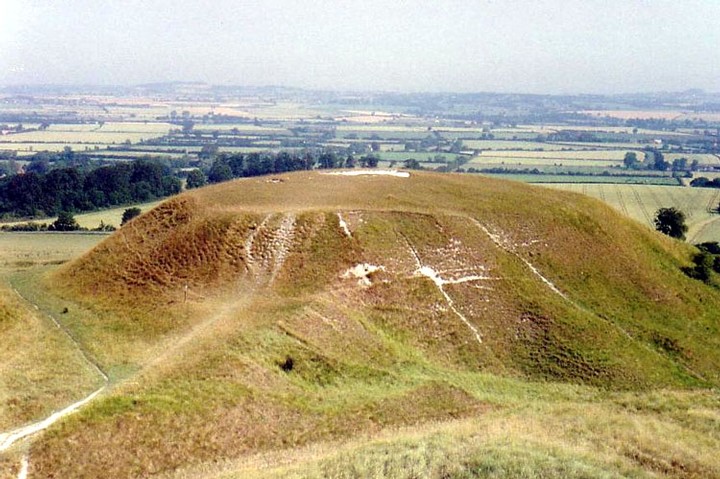

The horse does look a lot fatter, but otherwise is essentially the same as today. The illustration is from “The Green Roads of England” by R. Hippisley Cox, published in 1914 and re-issued in 1973 by Garnstone Press. The book contains many drawings and plans of hillforts etc and they are all very accurate. That suggests that this drawing of the White Horse is also reliable.

Loughton Camp in Epping Forest

Loughton Camp in Epping Forest

Sarsen in the churchyard

The entrance after recent restoration.

Barrow wight?

Double gateway

“When day is done” – this is a beautiful place.

The banks of Bury Camp.

Avebury Morning – Pastel

Dyrham Camp

Oliver’s Castle

Small by Wessex standards, but rare in ploughed out eastern England, this long barrow is 31m long. A pile of bones was found at the lower end in 1855. A Saxon burial was dug into the eastern end.

There are ten Bronze Age round barrows on Therfield Heath. This group is unmistakeable, but some can be mistaken for golfers’ bunkers and a visit is often made hazardous by flying golf balls.

Seahenge at Dawn
Pastel

Is this the shortest standing stone in Britain?

More than 500 Neolithic and Bronze Age sites have been excavated in the Isles of Scilly. With another 30 or so only accessible at the lowest tides, how many more are permanently submerged? Once a single island (with the exception of Agnes and Annet) did the inundation of Scilly give rise to the legend of Lyonesse?
See Fieldnotes and Folklore

The Nag’s Head. A natural rock sculpture, but what a beauty!

Ruined entrance grave on Gweal Hill. Gweal Island is opposite.

Ancient field walls and hut circle (centre left) off the coast of Bryher

Submerged sites shown on the marine contour map from Paul Ashbee’s “Ancient Scilly”. David and Charles 1974.

Stone head on Chapel Downs

From Gweal Hill looking into the central lagoon of Scilly.

Twin barrows of Trevelgue

The Cove

The Old Man of Gugh

South Hill, Samson

What is it?




















